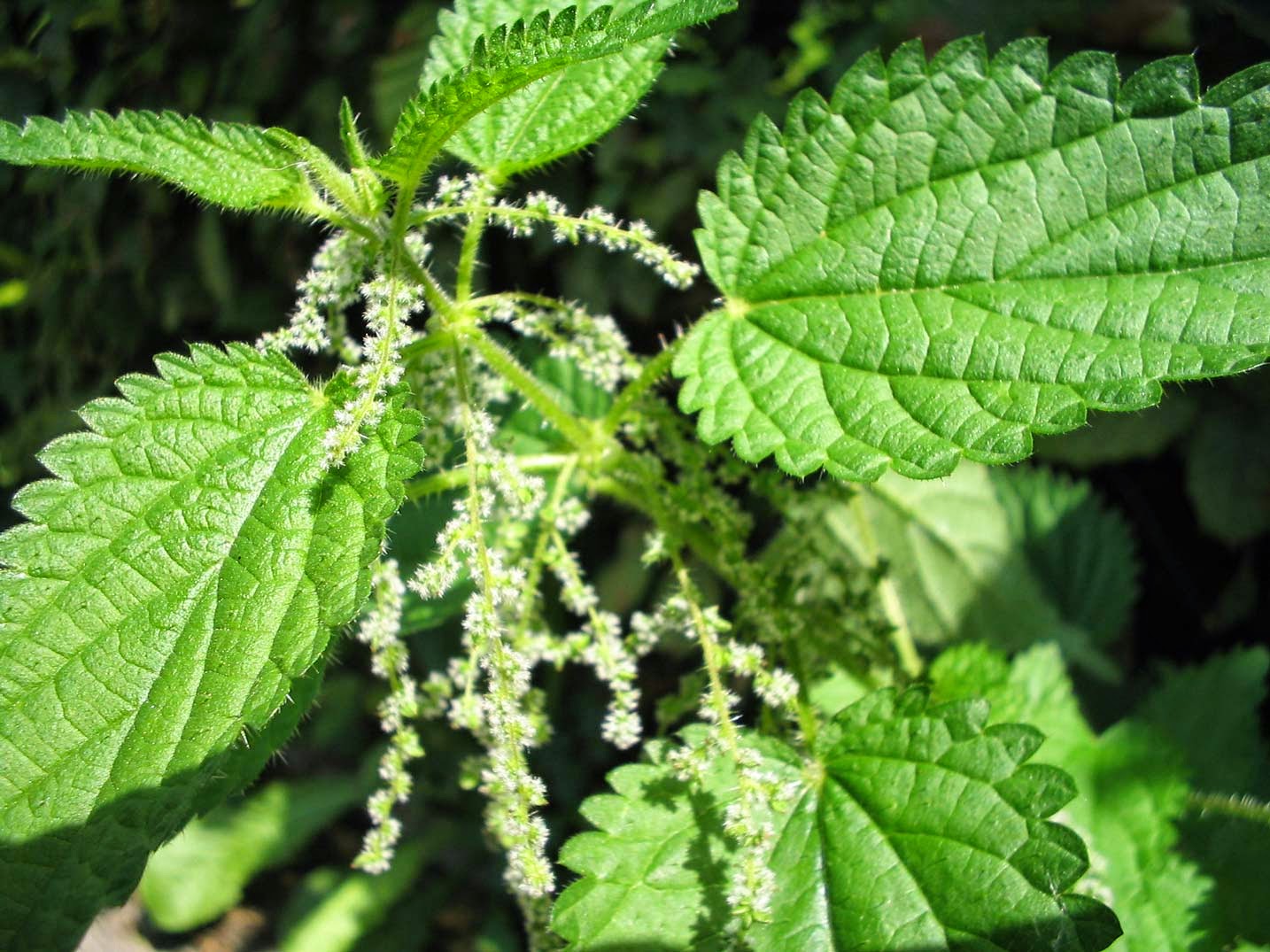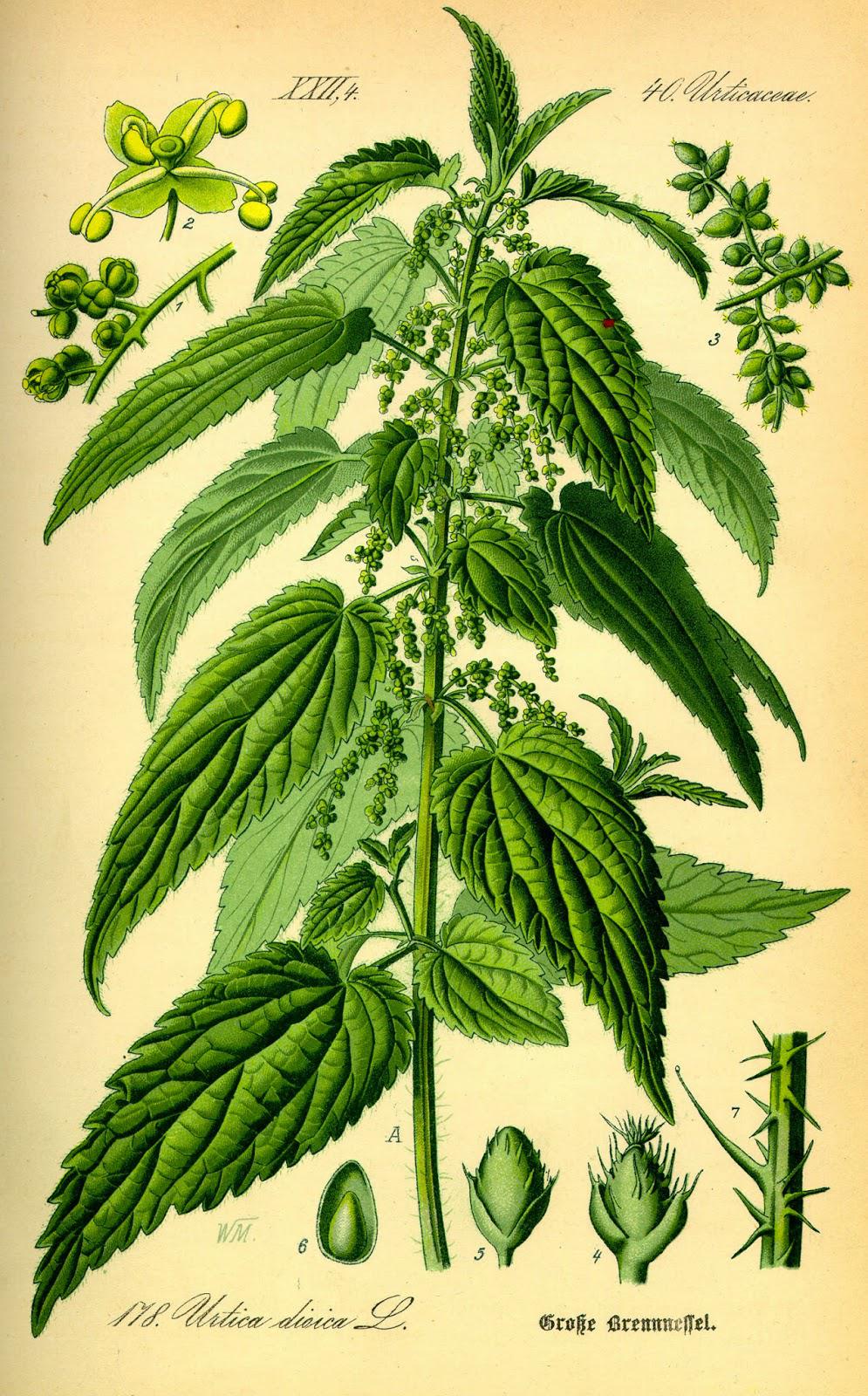Stinging Nettle is one of many commonplace plants which are both good for the wildlife garden, and serve as a food & medicine. They  are therefore doubly welcome in a permaculture design.
are therefore doubly welcome in a permaculture design.
Nettle tea has been used as a medicinal herb for centuries in Europe. An easily made green tea from fresh or dried leaves, nettle tea has plenty of antioxidants and other metabolites that bring benefits to every system in the body. For two weeks in spring while the nettles are young and tender, a cup of nettle tea each day serves as a spring tonic. Vitamins, lutein, lycopene and iron in nettle tea are restorative to the system. Herbalists refer to nettle as an adaptogen, alterative, depurient, or a blood purifier, and it had found a place in many useful formulas, including more recently for hayfever.
Nettles can be used for food, and make an excellent soup. As nettle has stinging hairs, they should be briefly blanched or boiled before eating. The location of the plant and its growing conditions should determine harvesting; as nettle tends to grow around human settlements, sometimes concentrating toxic residues, so care should be taken. Image: Wikipedia Commons
A stand of stinging nettle can be harvested as a natural fertiliser in the form of a tea. Fill a bucket with nettle clippings (particularly tops). Add rain water to about 3/4 full. Chop the mixture with hedge clippers. Stir the mixture thoroughly every few days (some say once a day,  every day). After about two weeks it is ready to use.When using this mixture, filter out the debris and use only the clearish liquid. The solution is mixed with water in a proportion of 1:10 (one part nettle solution to ten parts water). Pour the solution directly at the base of the plants where the roots will have quick use of it. On the compost heap they supply plentiful nitrogen and silica. Plants with a high nutrient demand will benefit from nettle tea, including tomatoes, courgettes, cucumbers and brassicas.
every day). After about two weeks it is ready to use.When using this mixture, filter out the debris and use only the clearish liquid. The solution is mixed with water in a proportion of 1:10 (one part nettle solution to ten parts water). Pour the solution directly at the base of the plants where the roots will have quick use of it. On the compost heap they supply plentiful nitrogen and silica. Plants with a high nutrient demand will benefit from nettle tea, including tomatoes, courgettes, cucumbers and brassicas.
Stinging nettles can provide excellent habitat for wildlife. Nettle can support up to 40 species of insect, including colourful butterflies such as Small Tortoishell and Peacock. The rich insect community draws in birds and foraging insectivores such as hedgehogs, shrews and toads. Aphids attract ladybirds and blue tits. In the autumn, seed eating birds such as house sparrows, chaffinches, and bullfinches eat the nettle seeds. Whilst nettles don’t have particularly colourful or conspicuous flowers, or indeed much by way of perfume, they are an essential plant to consider if you are thinking of creating a wildlife garden. They also support a large number of over wintering insects as eggs on their leaves.
Image: Wikimedia Commons
To find out more about Stinging Nettle why not have a look at our Weed Control online course and Weeds Ebook
References
Rosemary Gladstar's Medicinal Herbs: A Beginner's Guide: 33 Healing Herbs to Know, Grow, and Use. Rosemary Gladstar. Storey Publishing, 2012
A Modern Herbal. Mrs M Grieve. Dorset Press, 1992.
Permaculture: A Designers' Manual. Bill Mollison. Tagari Publications; 2nd edition, 1988.